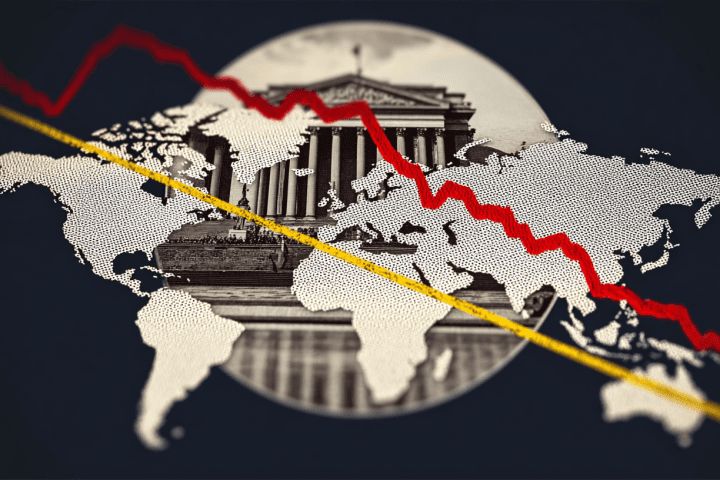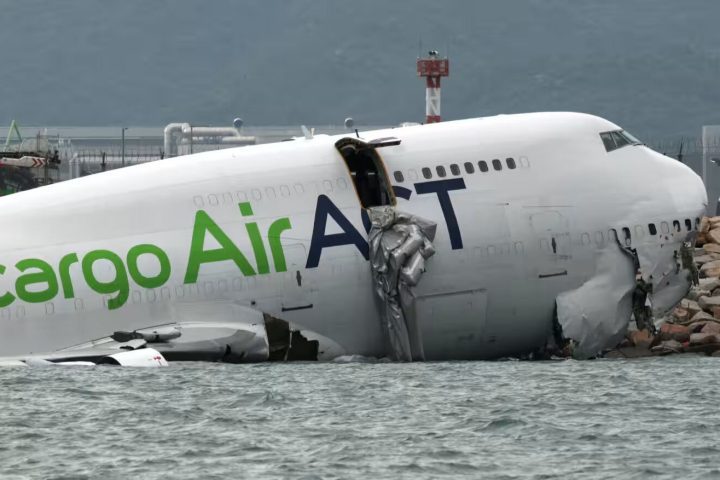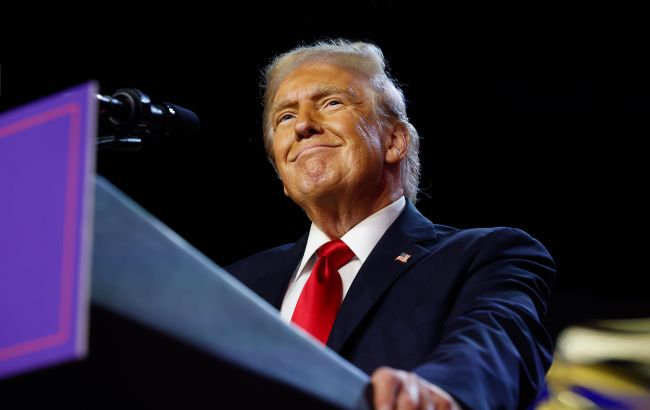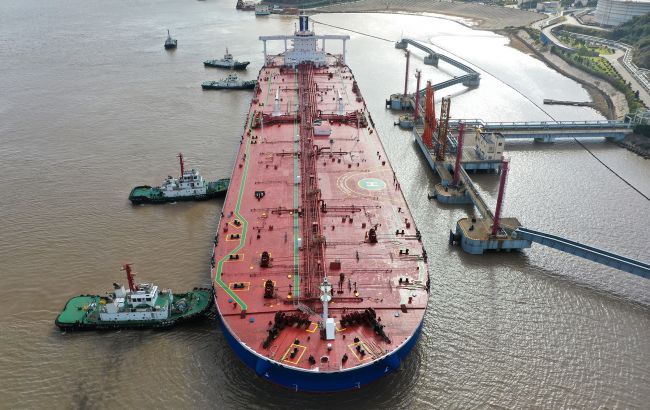The intricate web of global supply chains that powered decades of economic growth faces unprecedented disruption as political realignments reshape international trade. From rising geopolitical tensions between major powers to pandemic-driven policy changes and escalating protectionism, the factors governing where and how goods are produced, transported, and sold are fundamentally changing. These shifts force businesses to rethink manufacturing locations, diversify supplier networks, and navigate increasingly complex regulatory environments. Understanding these transformations is essential for companies, investors, and policymakers seeking to adapt to a world where political considerations increasingly override purely economic efficiency in supply chain decisions. The era of seamless global integration is giving way to a more fragmented, politically-driven trade landscape with profound implications for economic growth, inflation, and international relations.
The End of Hyperglobalization
For three decades following the Cold War’s end, global trade expanded faster than economic growth as companies optimized supply chains for maximum efficiency regardless of geography. Manufacturing concentrated in locations offering lowest costs, components crossed multiple borders during production, and just-in-time inventory systems minimized holding costs. This hyperglobalization delivered lower consumer prices, increased corporate profits, and lifted hundreds of millions from poverty.
However, this model depended on stable political relationships, open borders, and shared rules governing international commerce. As these assumptions erode, the economic logic favoring maximum global integration weakens. Political risk, supply security, and strategic considerations now compete with cost efficiency in supply chain decisions.
The COVID-19 pandemic brutally exposed hyperglobalization’s vulnerabilities. When a single region faced lockdowns, global supply chains collapsed as critical components became unavailable. Pharmaceutical supplies, personal protective equipment, and semiconductor shortages demonstrated dangerous dependencies on geographically concentrated production. These disruptions catalyzed political demands for supply chain resilience even at the cost of efficiency.
Simultaneously, great power competition between the United States and China intensified, with technology, trade, and supply chains becoming strategic battlegrounds. Both nations increasingly view economic interdependence as vulnerability rather than mutual benefit, implementing policies deliberately reducing integration in favor of security and autonomy.
Key Political Forces Driving Supply Chain Transformation
US-China Strategic Competition
The most consequential political shift affecting global trade is the deteriorating relationship between the world’s two largest economies. What began as trade tensions under President Trump has evolved into comprehensive strategic competition spanning technology, military affairs, and economic systems. Both nations are actively decoupling in sensitive sectors, with ripple effects throughout global supply chains.
The United States has implemented extensive restrictions on Chinese technology access, particularly semiconductors and advanced manufacturing equipment. Export controls prevent American companies from selling cutting-edge chips and chipmaking tools to Chinese firms, while investment restrictions limit Chinese access to US technology sectors. These measures force companies to maintain separate supply chains for different markets, dramatically increasing complexity and costs.
China responds with its own supply chain localization efforts, subsidizing domestic industries to reduce dependence on Western technology. The Made in China 2025 initiative and subsequent programs aim for self-sufficiency in semiconductors, aviation, pharmaceuticals, and other strategic sectors. Chinese firms face pressure to use domestic suppliers even when foreign alternatives offer better quality or pricing.
This bifurcation creates a “splinternet” effect extending beyond digital services into physical supply chains. Companies serving both markets increasingly need parallel production systems complying with divergent regulatory requirements and political expectations—effectively creating two separate global economies.
Regional Trade Bloc Formation
As global consensus fragments, regional trade agreements gain prominence. The Comprehensive and Progressive Agreement for Trans-Pacific Partnership, the Regional Comprehensive Economic Partnership, the European Union’s various trade agreements, and the African Continental Free Trade Area all represent attempts to secure trade relationships amid global uncertainty.
These agreements create preferential access within blocs while potentially discriminating against outsiders. Companies optimize supply chains for regional rather than global efficiency, with production clusters emerging within each major trading bloc. This regionalization reduces supply chain distances, potentially improving resilience while sacrificing scale economies that global integration provided.
Reshoring and Nearshoring Initiatives
Many governments now actively encourage domestic production of goods deemed strategically important. The United States’ CHIPS Act provides substantial subsidies for semiconductor manufacturing on American soil. The European Union’s various industrial policies support battery production, pharmaceutical manufacturing, and other critical industries. These initiatives explicitly sacrifice economic efficiency for supply security and political autonomy.
Nearshoring—moving production to nearby rather than distant countries—represents a middle path between complete domestic production and far-flung global supply chains. American companies increasingly favor Mexican manufacturing over Asian alternatives. European firms expand production in Eastern Europe rather than Asia. This trend reduces geopolitical risk and shipping distances while maintaining some cost advantages through international production.
Impact on Specific Industries and Sectors
Different industries face varying supply chain challenges as political shifts reshape trade. Understanding sector-specific impacts helps businesses and investors anticipate changes and adapt strategies accordingly.
Technology and semiconductor industries experience the most intense political pressures. Semiconductors power everything from smartphones to weapons systems, making them strategic assets governments cannot ignore. The geographic concentration of advanced chip production—primarily Taiwan and South Korea—creates vulnerabilities that drive massive investments in alternative production locations despite enormous costs.
Automotive supply chains face transformation as electric vehicle transitions coincide with political pressures. Battery production, rare earth mineral processing, and charging infrastructure all carry strategic implications beyond commercial considerations. Countries compete to dominate electric vehicle supply chains through subsidies, tariffs, and technical standards favoring domestic producers.
Pharmaceutical and medical supply chains attracted intense scrutiny during the pandemic when critical drug and equipment shortages exposed dangerous dependencies. Many countries now mandate domestic production capacity for essential medicines, creating duplicative manufacturing that economic efficiency alone would not justify.
Energy supply chains face political pressures from multiple directions. The Russia-Ukraine conflict disrupted European energy supplies, accelerating transitions toward alternative sources despite short-term economic pain. Climate policies reshape energy production and consumption patterns according to political priorities sometimes conflicting with market forces.
Agricultural trade increasingly reflects political tensions, with countries using food exports as geopolitical tools while importing nations seek supply diversification to reduce vulnerabilities. Climate change adds another layer of disruption as traditional agricultural regions face productivity challenges while new areas become viable.
Corporate Strategies in the New Trade Environment
Businesses are implementing various strategies to navigate politically-driven supply chain disruptions:
- Supply Chain Diversification: Companies are reducing dependence on single countries or regions by developing multiple sourcing options. This “China plus one” or “China plus many” strategy maintains Chinese suppliers while building alternatives in Vietnam, India, Mexico, or other locations providing fallback options if political tensions disrupt primary supply chains.
- Inventory Strategy Shifts: Just-in-time inventory systems are giving way to just-in-case approaches maintaining larger buffer stocks. While increasing holding costs, these inventories provide resilience against supply disruptions from political conflicts, natural disasters, or pandemic lockdowns.
- Vertical Integration: Some companies are bringing previously outsourced production in-house or acquiring suppliers to ensure greater supply security. This vertical integration sacrifices specialization benefits but provides control during disruptions.
- Technology Investment: Automation, artificial intelligence, and advanced manufacturing technologies make domestic production more economically viable by reducing labor cost disadvantages. These investments enable nearshoring or reshoring that would be uneconomical with traditional production methods.
- Scenario Planning and Risk Assessment: Companies are developing sophisticated geopolitical risk assessments and scenario planning exercises, preparing contingency plans for various political outcomes rather than assuming stable conditions.
Economic Implications and Trade-Offs
The political reshaping of supply chains carries significant economic implications. Most fundamentally, prioritizing resilience and security over efficiency increases costs. Duplicate production capacity, larger inventories, shortened supply chains, and domestic sourcing all raise expenses that ultimately flow through to consumer prices or reduced corporate profits.
Inflation pressures intensify as supply chain reorganization proceeds. The disinflationary forces that globalization provided—access to low-cost labor, economies of scale, competitive pressures—reverse as production fragments across political boundaries. Central banks face challenges distinguishing temporary transition costs from permanent inflationary effects requiring monetary policy responses.
Economic growth may slow as efficiency losses from fragmented supply chains reduce productivity gains. The specialization and comparative advantage that drove previous economic expansion diminish when political considerations override economic logic. Developing economies particularly suffer as opportunities to industrialize through export-oriented manufacturing diminish.
However, proponents argue that apparent efficiency gains from hyperglobalization ignored hidden costs and risks. Supply chain disruptions’ economic damage, security vulnerabilities from strategic dependencies, and lost domestic industrial capacity all represent costs that market prices undervalued. From this perspective, politically-driven supply chain adjustments correct market failures rather than imposing inefficiency.
The Role of Emerging Technologies
New technologies are simultaneously enabling and requiring supply chain transformation. Blockchain technology provides transparency and traceability throughout supply chains, helping companies verify compliance with various political requirements regarding sourcing, labor practices, and environmental standards. This visibility becomes essential as different jurisdictions impose conflicting requirements on internationally-traded goods.
Artificial intelligence optimizes increasingly complex supply chains, analyzing geopolitical risks, predicting disruptions, and recommending sourcing decisions balancing efficiency, resilience, and political considerations. The computational challenges of managing fragmented supply chains would be insurmountable without AI assistance.
Advanced manufacturing technologies including 3D printing, robotics, and smart factories enable distributed production closer to end markets. These technologies reduce the cost disadvantages of domestic or regional manufacturing, making politically-driven supply chain reorganization economically feasible.
Digital twins—virtual replicas of physical supply chains—allow companies to model various scenarios, testing how different political events might affect operations and evaluating alternative strategies without expensive real-world experimentation.
Key Challenges Businesses Face
Companies navigating the new trade environment encounter numerous challenges:
- Regulatory Complexity: Complying with divergent and sometimes contradictory regulations across different jurisdictions requires substantial legal and compliance resources. Export controls, data localization requirements, local content mandates, and environmental regulations all vary by location, creating compliance nightmares for globally-integrated companies.
- Investment Uncertainty: Long-term capital investments in production facilities carry political risk that historical analysis cannot predict. Companies must evaluate whether today’s favorable political environment will persist through multi-decade facility lifespans.
- Talent and Expertise: Building production capacity in new locations requires workforce development, management expertise, and supplier ecosystems that take years to develop. Countries attracting nearshoring must invest heavily in education and infrastructure to capture opportunities.
- Technology Transfer Concerns: Establishing production in certain locations requires sharing intellectual property and technical knowledge that might be appropriated, creating long-term competitive vulnerabilities even if short-term political considerations favor the move.
- Cost Management: Maintaining cost competitiveness while reorganizing supply chains for political resilience challenges companies facing both margin pressures and investment requirements simultaneously.
- Stakeholder Communication: Explaining supply chain decisions to various stakeholders—investors, customers, employees, regulators—who may prioritize different factors requires sophisticated communication strategies.
Looking Ahead: Scenarios for Global Trade
Several possible futures for global trade and supply chains exist:
- Continued Fragmentation: Geopolitical tensions intensify, producing increasingly separate economic blocs with limited integration. This scenario maximizes security and political autonomy while minimizing efficiency and growth.
- Managed Competition: Major powers establish “guardrails” limiting economic conflict while maintaining strategic competition in specific sectors. This middle path balances efficiency with security through negotiated boundaries around economic integration.
- Technology-Enabled Regionalization: Advanced manufacturing technologies enable efficient regional production, creating economically viable alternatives to global supply chains that provide both resilience and reasonable costs.
- Crisis-Driven Cooperation: Major global challenges—pandemic, climate change, resource scarcity—force renewed cooperation as countries recognize that fragmented approaches cannot address shared threats effectively.
Each scenario creates different opportunities and challenges for businesses, requiring flexible strategies adaptable to evolving circumstances rather than rigid plans assuming specific outcomes.
Conclusion
Global political shifts are fundamentally reshaping supply chains and international trade, ending the era of hyperglobalization that characterized recent decades. The forces driving this transformation—US-China strategic competition, pandemic-exposed vulnerabilities, rising protectionism, and regional bloc formation—show no signs of reversing. Instead, they are intensifying as countries prioritize supply security and strategic autonomy over pure economic efficiency.
For businesses, this environment demands new approaches balancing cost optimization with resilience, diversifying supply sources, investing in flexibility, and developing sophisticated geopolitical risk assessment capabilities. The companies that thrive will be those treating supply chain design as a strategic rather than purely operational decision, integrating political analysis into business planning.
For policymakers, the challenge involves managing transitions toward more resilient supply chains while minimizing economic disruptions, maintaining essential international cooperation despite strategic competition, and ensuring that supply chain reorganization serves genuine security needs rather than protectionist interests disguised as national security.
For consumers and workers, politically-driven supply chain changes mean higher prices, different product availability, and shifting employment opportunities as production relocates. Understanding these trade-offs helps societies make informed decisions about how much efficiency to sacrifice for resilience and security.
The supply chain landscape continues evolving rapidly as political conditions change and technologies advance. Adaptability, scenario planning, and careful risk management will characterize successful navigation of this new trade environment where political shifts increasingly override purely economic considerations in determining how goods flow around the world.












